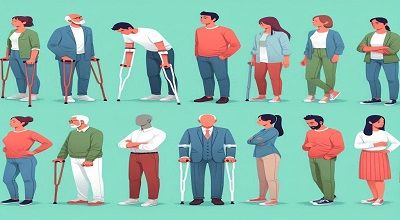Posture and postural defects
In 2024, the focus on posture and postural defects will continue to evolve with various studies and innovations aimed at understanding and addressing these issues. Here’s a summary of the latest insights and approaches:
24-Hour Posture Management
The concept of ’24-hour posture management’ is gaining recognition as a comprehensive approach to reduce postural asymmetry and improve function. This involves a range of interventions for all lying, sitting, and standing positions to mitigate the negative effects of gravity and prevent complications related to poor posture.
Importance of Early Assessment
The year 2024 emphasizes the importance of early identification of postural issues. By recognizing these problems promptly. Personalized wellness plans can be created to address specific concerns. Introducing annual posture assessments into practice is seen as a strategic advantage. Aligning with New Year resolutions and adopting a proactive approach to health.
Prevalence and Causes of Postural Defects
Epidemiological data indicates a significant prevalence of postural defects. Especially among school-age populations. Reports suggest that around 50% to 70% of studied school children exhibit postural defects. The development of postural reflexes and locomotion.
Known as osteogenesis, is a complex process influenced by various external and internal factors. Decreased physical activity is identified as a frequent cause of postural defects. As it leads to diminished proprioceptive information reaching the nervous system.
Innovative Solutions for Posture Support
The use of passive back-support exosuits is being evaluated for their effectiveness on postural control and cognitive performance. These wearable support systems aim to reduce physical demands and influence postural control and cognitive performance by mitigating muscular fatigue. Especially during tasks that induce fatigue and require maintaining a specific posture.
Final Words
These insights reflect an ongoing commitment to understanding and improving postural health through a combination of assessment, management, and technological innovation. The approach to posture and postural defects is becoming more holistic and integrated, considering the individual’s entire lifestyle and daily activities.
